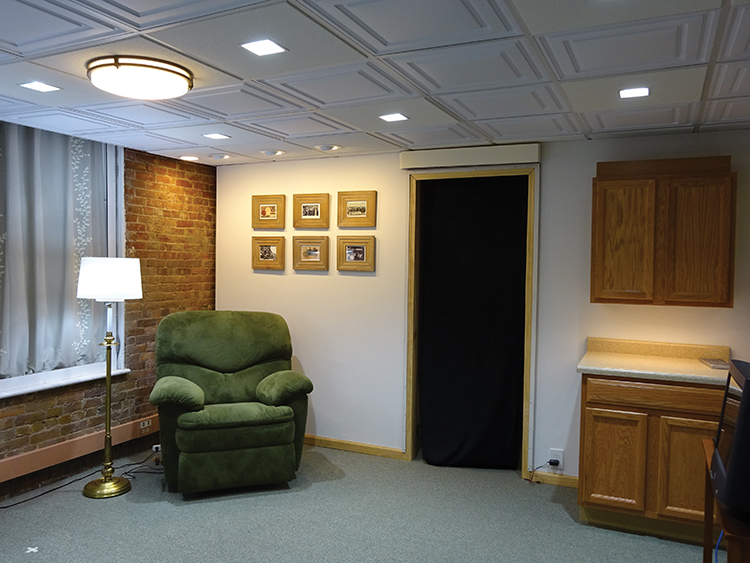Light doesn’t only serve as the basis of vision. It can influence behavior and how people feel. Further, light plays an important role in human health. As researchers gain insight into the relationship between light and health, the lighting industry is beginning to consider health effects in product and lighting design best practices.
Heart of the issue
At the core of one of light’s biggest effects on human health is its nonvisual effect on the body’s circadian system. The circadian system produces and regulates bodily functions based on 24-hour cycles, called circadian rhythms. Examples of circadian rhythms include sleep-wake cycles, core body temperature changes, and the release timing of hormones, such as melatonin. Disruption to circadian rhythms can lead to poor nighttime sleep and increased daytime napping as well as a greater risk of depression, obesity, diabetes and seasonal affective disorder.
The daily change from light to dark is the primary stimulus for synchronizing circadian rhythms to our local position on Earth. The human eye contains various cells receptive to light. Together with rods and cones, recently discovered intrinsically photoreceptive retinal ganglion cells, which are connected directly to the brain’s master clock, convert light into neural signals for regulating the timing of the circadian system.
For millions of years, sunrise and sunset primarily regulated the human circadian system. Today, we use electrical light sources, which also stimulate our circadian system. Designed primarily for vision, electrical lighting can provide too much or too little illumination to properly drive the circadian system. This uncertainty in light exposure can cause circadian disruption.
As our understanding of the science increases, it also creates opportunities to enjoy the visual and aesthetic benefits of electrical lighting while designing lighting systems that are conducive to proper circadian regulation.
What we can do
Mariana G. Figueiro, professor and light and health program director at the Lighting Research Center, Rensselaer Polytechnic Institute, Troy, N.Y., has been studying the relationship between light and health for years. She said four primary characteristics influence light’s effect on the circadian system.
Intensity is the quantity of light the eye’s photoreceptors receive during the day. In application, we are talking about light levels falling on the eye.
Figueiro said this factor may be predominant in circadian response. She said that vertical light levels are important here, rather than the horizontal (workplane) light levels that are typically the focus of lighting design for visual performance. This would entail ensuring vertical surfaces, such as cubicle walls, are properly lighted. It is a shift in traditional practice.
Optimal light levels can be calculated, but generally, a light level of about 30–40 vertical foot-candles (which translates to roughly 80–120 horizontal foot-candles) is desirable in the morning. Providing these light levels is currently at odds with commercial building energy codes. In fact, light levels suitable for energy codes based on visibility are sometimes too low to activate the circadian system, which is a big problem, Figueiro said. Ideally, light level will be variable throughout the day through supplemental task lighting and controls.
In the evening, starting about two hours before bedtime, a much lower vertical light level of 1–2 foot-candles is desirable.
Spectrum is the wavelength (typically associated with related color perception) of the light. While visual acuity is most responsive to medium-wavelength light [around 555 nanometers (nm), or “green”], circadian regulation is most responsive to short-wavelength light (460 nm, or “blue”). As a result, there is greater interest in lamps with a very cool correlated color temperature (5,000K-plus) and color-tuning light-emitting diode (LED) luminaires.
However, while research suggests spectrum can increase circadian response by a factor of two, Figueiro said increasing light levels is a more effective way to entrain the circadian system during the day. Both spectrum and quantity of light must be considered.
Further, while short-wavelength light can trigger a strong circadian response, red light can increase daytime and nighttime alertness and affect production of hormones, such as cortisol. So, red wavelengths, in addition to blue, are important.
Timing is when the eye’s photoreceptors receive light. People who work during the day require different light-exposure timing than people who work at night. The same intensity and spectrum delivered in the morning will have a different effect on sleep time than if received in the evening. In short, morning light aids going to bed earlier, while evening light will delay the timing of sleep.
Duration is the amount of exposure time. Intensity is important, but the circadian system really responds to the cumulative quantity of light the eye’s photoreceptors receive during the day. In short, the circadian system doesn’t turn on a dime. It essentially sums up morning and evening light and uses the net result to either advance or delay the body’s internal clock.
“We need to know these characteristics before we can determine what constitutes healthy lighting for each of us,” Figueiro said.




